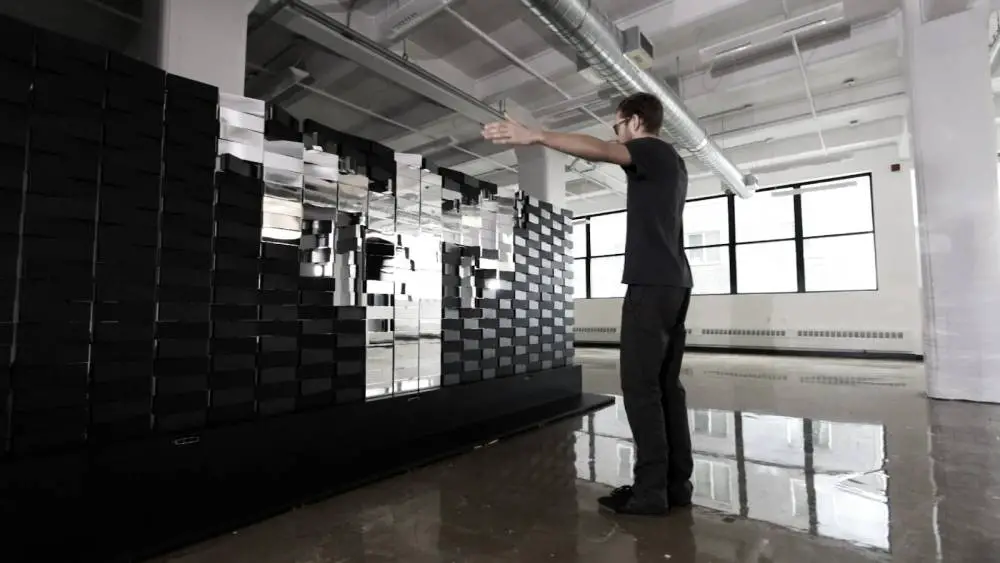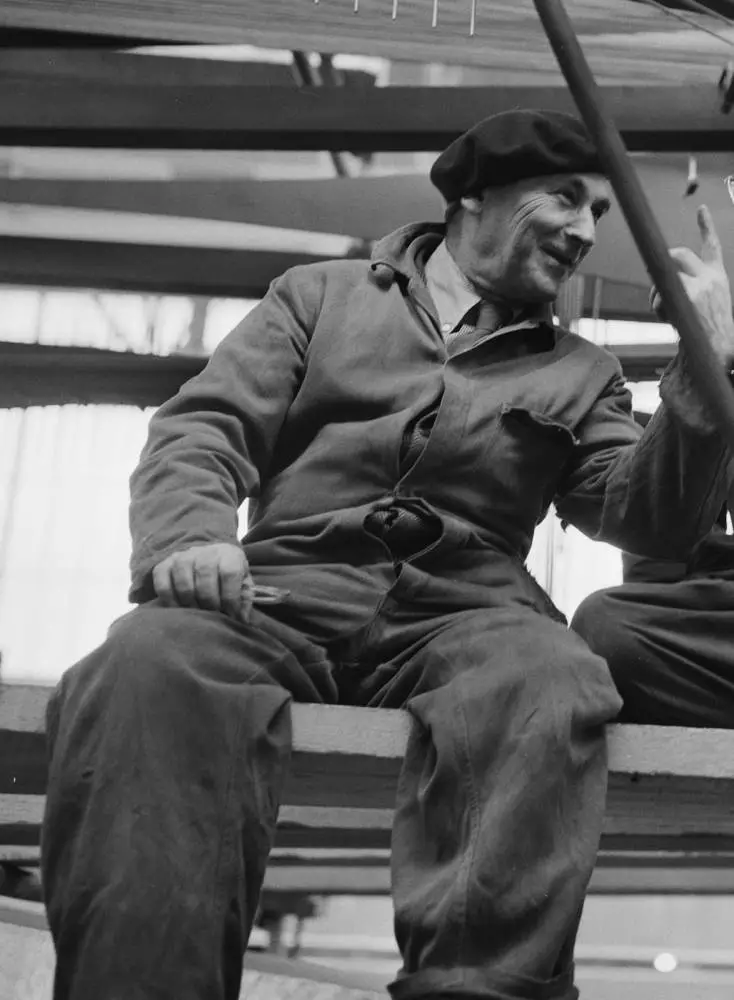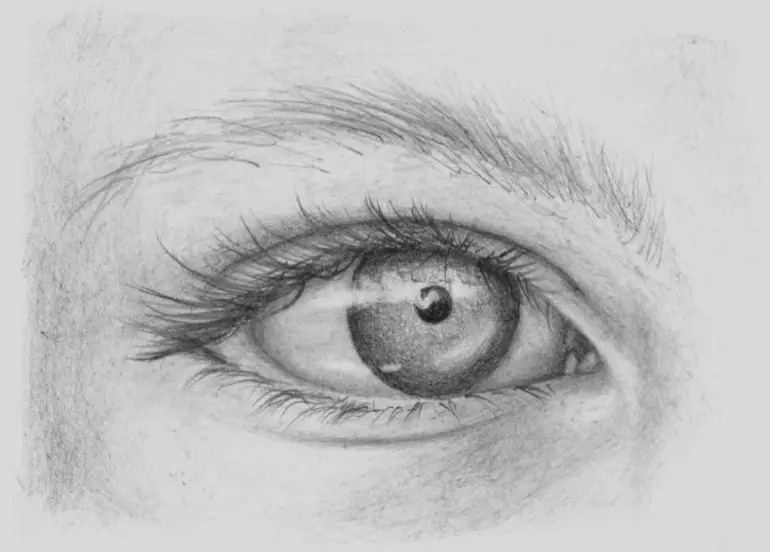What Is Kinetic Art? – A Comprehensive View
Kinetic art is a type of modern art that requires movement (or the illusion of movement) for the viewer to fully appreciate the message and effect behind the piece.
The term ‘kinetic art’ was founded in the 1920s by artists, Naum Gabo and Antoine Pevsner, and was inspired by the movements of American sculptor, Alexander Calder (1898-1976), who is known for being one of the first artists to dabble in air-based art.
Kinetic art is a broad term for three-dimensional pieces (such as sculptures, mobiles, etc.) that are typically powered into motion by the wind, electric motor, or the observer him/herself.
The Kinetic art movement dates back to circa the 19th century, with artists such as Edgar Degas, Claude Monet, and Édouard Manet toying with the idea or illusion of human movement within a canvas painting in hopes of making the piece more lifelike, and is part of the impressionist style of realism to incorporate the element of time within art.
Kinetic movement in sculpting and mobile art took off in popularity between the 1920s and 1960s, with artists like Bridget Riley becoming known for their kinetic construction art that played around with geometric shapes that were designed to distort the perception of the viewer.

https://commons.wikimedia.org/wiki/File:Brixel_Mirror_by_BREAKFAST_Studio.jpg
What is Kinetic Art? The Lowdown
Kinetic art is designed to be enjoyed while the piece is in motion, instead of being static. Or at least, it’s supposed to create an impression of movement.
“Kinetic” simply means “movement”. More contemporary art that looks at the kinetic approach is often fully static, but owing to the kaleidoscopic effect, gives the impression of movement.
Kinetic Art Methods
There are several ways to create art that either tricks the viewer’s perspective that the piece is in motion, or that is actually fluid in some way. The ways to make a piece of art kinetic include:
Art Mobile
Not to be confused with the electronic device! A mobile sculpture is a piece of art that is (usually) formed of several components, which are suspended in air and move in response to air currents or a motorized power force.
The mobile art movement can be accredited to Alexander Calder, who started creating his own in circa 1930, which is said to have revolutionized the way we look at and enjoy art. The term “mobile” was coined by the Normandy-based sculptor Marcel Duchamp (1887-1968).

(This article may contain affiliate links and I may earn a commission if you make a purchase)
Sculpture
While not strictly representative of kinetic art, sculpture is a 3-dimensional art form that is typically borne of carving, modeling, constructing, or casting.
Carving is one of the oldest types of art creation. It involves using a sharp instrument to scrape or whittle a solid material, such as stone, wood, ivory, or bone.
More modern types of sculpting rely on materials to create a piece via casting. This can be anything from clay to fiberglass; to plastic to rubber (and anything in between that can be molded).
Modeling requires a soft material that is then manipulated by the artist into the shape or form of choice. Typically, this can be materials such as clay or wax. Anything that isn’t too solid will work. You can even use household items, such as soap or dough!
Kinetic art in the form of construction often features scrap materials put together to create a still-life piece that depicts movement. This is one of the many areas Pablo Picasso (1883-1973) delved into.
There are multiple ways of constructing a piece, including gluing, sewing, welding, bolting, and balancing, lending itself as one of the more broad ways to experiment with kinetic art. These often rely on an electric motor for their kinetic rhythm.
Op Art
Op art was the pillar of the kinetic art movement that exploded in the 1960s with its use of geometric shapes creating the optical illusion of movement; the goal being to create a disturbing or disorientating effect on the observer.
It has also been used in psychiatric practices, such as psychotherapy, which was popular around the time op art became a phenomenon because of the connotations of geometric patterns (which was exclusive to this type of kinetic art) and the psychological angle of human perception.
Examples of Kinetic Art
Some of the most famous and prominent kinetic art examples include:

https://en.wikipedia.org/wiki/File:Marcel_Duchamp,_1916-17_studio_photograph.jpg
- “Bicycle Wheel” (Marcel Duchamp, 1913)
- “Kinetic Construction (Standing Wave)” (Naum Gabo, 1920)
- “Light Prop for an Electric Stage (Light Space Modulator)” (László Moholy-Nagy, 1930)
- “Arc of Petals” (Alexander Calder, 1941)
- “Vega III” (Victor Vasarely, 1957-59)
- “CYSP 1” (Nicholas Schöffer, 1956)
- “Homage to New York (fragment)” (Jean Tinguely, 1960)
- “Blaze” (Bridget Riley, 1964)
- “Labyrinth” (Groupe de Recherche d’Art Visuel, 1963)
Kinetic Artists: The Key Players
While the kinetic art movement dates back to the 19th century, it really came into itself during the early to mid 20th century. The most prominent figures in kinetic art are:

https://commons.wikimedia.org/wiki/File:NaumGabo1957.jpg
- Naum Gabo (1890-1977). Gabo was a Russian sculptor and painter. He spent most of his life traveling around Europe, and became a prominent figure in the Constructivism movement. He emigrated to the United States in 1946 and worked as an architecture professor at Harvard, becoming famous for his continuing sculpture commissions on the side. He died in Connecticut at the age of 87.
- Alexander Calder (1898-1976). Calder was the master of mobiles and was known for his ambiguity and evasiveness around his work, stating that theorizing about a piece of art should be a private affair for the artist alone. Calder had an educational interest in mechanical engineering, which very likely developed into his interest in mechanical sculptures. He later coupled these interests and created large works, such as the La Grande Vitesse sculpture in Michigan and the Trois disques in Montreal, Canada. He died in New York at the age of 78.
- Vladimir Tatlin (1885-1953). Tatlin was a Ukrainian/Soviet-era painter, architect, and stage designer who was a prominent figure in the Soviet avant-garde movement circa the 1920s, and then later as a Constructionist movement. He was considered a controversial figure, owing to his alleged anti-communist leanings, which caused him, at one point, to be dismissed from one of his stage designer jobs. Artistically, he had a fascination with clothing, architecture, and flying apparatus. He died at the age of 68.
- George Rickey (1907-2002). Rickey was an American sculptor who worked almost predominantly with stainless steel to erect his kinetic art pieces, which required air currents to create motion. His career was heavily influenced by Calder’s mobiles, and he later dabbled in the geometric patterning movement. Some of his pieces can be found in museums, such as the Guggenheim, the National Gallery of Art, and the Governor Nelson A. Rockefeller Empire State Plaza Art Collection. He died in Indiana at the age of 95.
- Bridget Riley (1935-). One of the more contemporary art figures, Riley’s art is inspired by Impressionism and Pointillism, and she was a popular art figure during the op movement of the 1960s. Her work was mostly drawings and paintings, generally featuring bold color. Riley is based in England and was heavily inspired by the works of Jackson Pollock. She’s currently the grand age of 91.
- Rebecca Horn (1944-). Horn is a German installation artist and film director, who divides her time between Paris and Berlin. Her most successful artistic era was the 1980s. She started her career a few decades earlier, predominantly working with fiberglass, which caused her to contract a respiratory disease, owing to no one at the time really being aware of how dangerous working with these materials could be. She spent a year living in a sanatorium, and many of her pieces were inspired by the loneliness and isolation of this period. She is currently 78 years old, and, like Riley, is one of the few kinetic art pioneers still going.
Modern Kinetic Sculptors & Other Artists of Visual Movement Art
- Christian Moeller (1959-)
- Liu Xiaodong (1963-)
- Victor Vasarely (1906-1997)
- Jean Tinguely (1925-1991)
- Jesús Rafael Soto (1923-2005)
Early Kinetic Art
The word “Kinesis” is Greek for “Movement”.
As referenced earlier, the early key players in the kinetic art movement were Claude Monet, Edouard Manet, and Edgar Degas, who began dabbling in kinetic artworks in the late 19th century. Another prominent figure in this movement was Auguste Rodin. He came a little later and was said to be inspired by the works of Degas and what he called the “vibrating” works of Monet.
Rodin wrote multiple texts on the works of these impressionist style artists, depicting them as creating an illusion “that art captures life through good modeling and movement”, which is the quintessential purpose behind kinetic aesthetics in fine art.
Rodin began creating his own sculptures in 1881. His work challenged his initial beliefs about the works of Monet, Manet, and Degas, and critics considered them attacks on their work, which wasn’t intentionally the case. He penned documents suggesting that kinetic art doesn’t depict organic movement, but that it merely hints at it by creating pieces in static form.
What Art Historians Think of Kinetic Art
Apparent Movement
Art historians began extensive studies of kinetic art in the 1950s and stated that “any type of kinetic art that was mobile independent of the viewer has apparent movement.” This kinetic style of art includes pieces that span the range from Pollock’s drip technique to Tatlin’s mobiles.”
The phrases “op art” and “apparent movement” were actually coined by historians, as opposed to artists working in these specific areas of kinetic art expression. Another term for kinetic art is ‘optical illusion’.
As with Rodin’s back-ups on his kinetic art theories, there are different schools of thought as to whether kinetic art is actually kinetic if it is stationary. However, many kinetic artists believe kinetic art doesn’t have to boast physical random motion; much less, it simply needs to create the artistic interpretation of dynamic motion.
Kinetic art is often a compelling mix of fine art and modern art, with its key focus being incorporating movement in some way. Many art historians consider the first true example of kinetic art to be “Bicycle Wheel” by Marcel Duchamp, due to the physical spinning capability of the piece.
Kinetic Artists: Style, Influences & Trends
Kinetic art grew around the second world war era when the geometric abstraction trend began to decline but crept back around again in the sixties in a more modernist approach. The post-war modern world demanded virtual movement be a less traditional approach, and instead incorporate a more technology-based approach.

The Dada movement has often played a big role in kinetic art in the 20th century, which also draws heavily on incorporating art with technology, but in a more post-modern way. Post-Dada kinetic art came from a united skepticism in the unity of art and tech as being the key way of depicting kinetic rhythms.
This was perhaps demonstrated best by Jean Tinguely and his “self-destructing” sculpture “Homage to New York” (1960), which was designed to set itself on fire.
Science has also played a key role in kinetic artistry, with topics such as physics, optics, and cybernetics lending themselves to the artists looking for creative concepts.
Kinetic Art: FAQs
Is Kinetic Art Abstract?
Kinetic art is effectively a modern extension of abstract art. It nods to abstract art but adds its own tech-based touch by depicting modern life through a hanging construction, moving sculptures, human bodies (ballet dancers), and other mechanized movements.
How Do Kinetic Sculptures Move?
Kinetic art doesn’t always physically move. Sometimes it merely creates the illusion that it is in motion. However, many pieces do physically move to create the desired effect and they may do this via the use of wind/air, electronic motor, water, or magnetism.
What Materials are Used in Kinetic Art?
Absolutely anything goes. You can create kinetic art with almost anything. Some frequent materials include clay, metal, plastic, wood, cardboard, paper, fabric/darn, and household objects, such as toys, cutlery, clothing, and more. The sky’s the limit.








